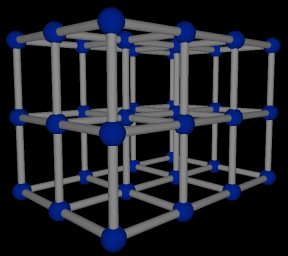

 Light Speed!
allows you to see phenomena that are difficult, if not impossible to
observe in the real world. As mentioned earlier, these are the distortions
that an object appears to undergo when moving at very, very high speeds.
They are caused by inherent properties of space and time which are
otherwise negligible in our everyday experience, as the speeds we are
familiar with are nothing compared to that of light. (299,792,458
m/s)
Light Speed!
allows you to see phenomena that are difficult, if not impossible to
observe in the real world. As mentioned earlier, these are the distortions
that an object appears to undergo when moving at very, very high speeds.
They are caused by inherent properties of space and time which are
otherwise negligible in our everyday experience, as the speeds we are
familiar with are nothing compared to that of light. (299,792,458
m/s)
There are four known "relativistic effects" of interest at ultra-high speeds, all of which Light Speed! simulates via real-time computation. In no particular order, these are:
![[Compressed lattice]](img/lattice-lc.png) The Lorentz contraction. This causes the object to
appear shorter than it really is, squashed along its axis of motion
(horizontal in the example at left). It is a direct manifestation of the
time-space continuity, in that motion through space effects a shift from a
spatial dimension to a temporal one. (This is hypergeometry, which tends
to be tricky to explain :-]
The Lorentz contraction. This causes the object to
appear shorter than it really is, squashed along its axis of motion
(horizontal in the example at left). It is a direct manifestation of the
time-space continuity, in that motion through space effects a shift from a
spatial dimension to a temporal one. (This is hypergeometry, which tends
to be tricky to explain :-]
![[Discolored lattice]](img/lattice-ds.png) The Doppler
red/blue shift. This affects the colors of the object. Not unlike
the Doppler effect for sound, it either stretches or compresses the
wavelengths of light emitted (or reflected) by the object, depending on
whether the object is moving toward or away from us. We thus observe
colors shifting toward the low end of the visible spectrum (a red shift)
or the high end (a blue shift). In extreme cases, these shifts can extend
into the infrared or ultraviolet ranges, and we see none of the original
color at all.
The Doppler
red/blue shift. This affects the colors of the object. Not unlike
the Doppler effect for sound, it either stretches or compresses the
wavelengths of light emitted (or reflected) by the object, depending on
whether the object is moving toward or away from us. We thus observe
colors shifting toward the low end of the visible spectrum (a red shift)
or the high end (a blue shift). In extreme cases, these shifts can extend
into the infrared or ultraviolet ranges, and we see none of the original
color at all.
![[Brightly lit lattice]](img/lattice-he.png) The headlight effect. When you have a moving,
omnidirectional source of light, it doesn't necessarily throw light
equally in all directions. Vector disparities between differing inertial
timeframes cause it to shine brighter in the forward direction than the
rearward one. In other words, the light is redistributed. Thus if the
object is approaching us (as at left, more or less) it looks brighter, and
if it is moving away from us it will look darker.
The headlight effect. When you have a moving,
omnidirectional source of light, it doesn't necessarily throw light
equally in all directions. Vector disparities between differing inertial
timeframes cause it to shine brighter in the forward direction than the
rearward one. In other words, the light is redistributed. Thus if the
object is approaching us (as at left, more or less) it looks brighter, and
if it is moving away from us it will look darker.
![[Optically distorted
lattice]](img/lattice-oa.png) And last, but certainly
not least, optical aberration. This is
probably the most exotic (and hard-
And last, but certainly
not least, optical aberration. This is
probably the most exotic (and hard-
Light Speed! permits all of the above effects, or any subset thereof, to be easily simulated and examined. The rendered object can be either a geometric lattice, of a specified size, or a custom 3D model loaded into the program. Any desired velocity (provided that it is less than c!) is readily achievable. The position and heading of the camera may be interactively controlled with the mouse, or specified explicitly via numerical inputs.
The simulator does have a few limitations; specifically, it makes no attempt at rendering shadows, and the lighting model it uses is not entirely accurate. These, however, are mainly a trade-off for the most important feature of the Light Speed! engine: real-time operation. With this, it is possible to explore the above effects in a fully dynamic and interactive manner.